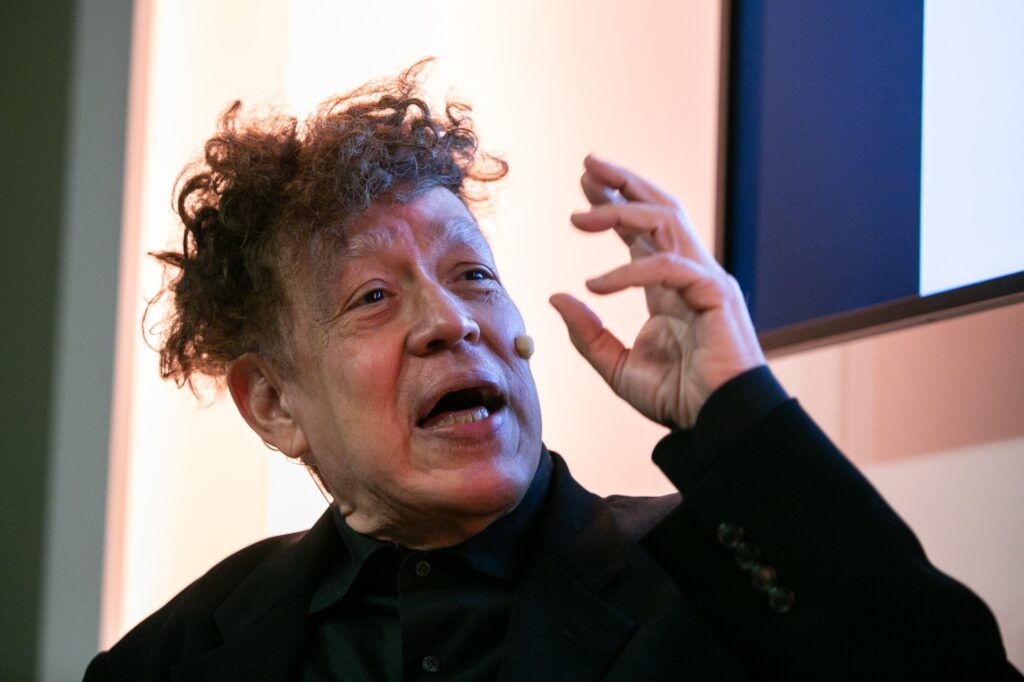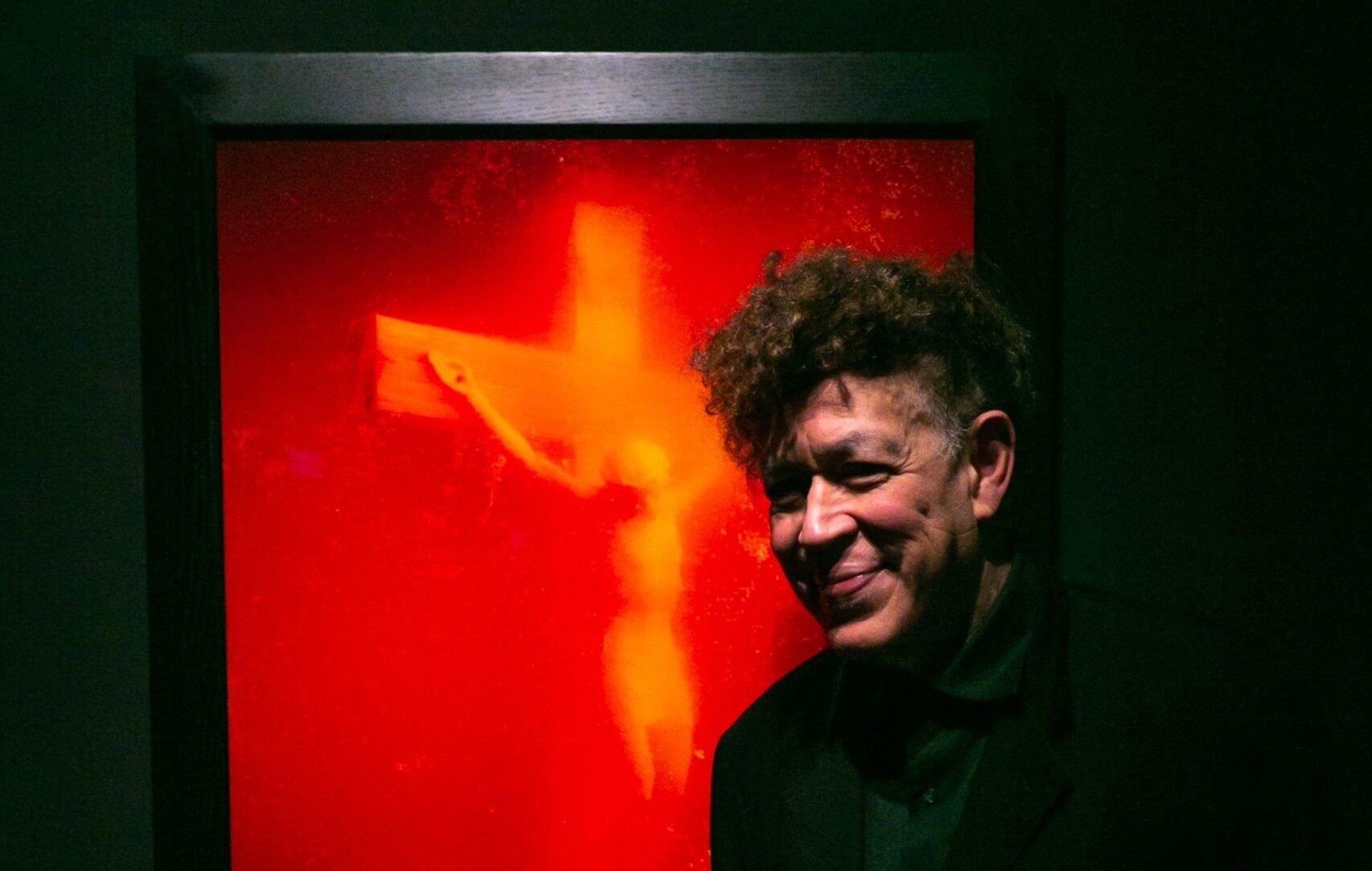“My work is like a boomerang that comes back years later,” said Andres Serrano on February 13 at the Museu de l’Art Prohibit.
The program of activities of the museum started with the presentation of the artist. The author of ‘Piss Christ’ in conversation with journalist Toni Ribas reviewed his career and the recurring themes in his work such as sex, death, and religion.
Born in Manhattan 73 years ago, Serrano assured that what people say or do about his work has never affected him: “They can attack me, and it doesn’t affect me, I have my vision; I don’t fight with my work, other people maybe do”, he commented calmly even though his works have been attacked and vandalized on numerous occasions.
The author of Piss Christ was born Catholic and raised Catholic. “After my confirmation the nun told me that I was just another soldier of Christ, and and I have always felt like a soldier of Christ”. Satisfied with the Pope’s invitation and the special blessing he gave him, Serrano considers that his pieces with religious references are not a provocation, for him being a Christian is a way of being tolerant.

With a generous smile and a sharp sense of humor, since he discovered the universe of Marcel Duchamp and Luis Buñuel, and decided to become an artist, he has always opted for descriptive titles and materials and themes that surround him. That is why in the eighties he worked with bodily fluids such as blood, semen or urine. Hence, he proudly recalls that a couple of his photos from that time were chosen by Metallica to illustrate the albums Load andReload.
Satisfied with the presentation of Piss Christ at the Museu de l’Art Prohibit, he commented that “I don’t see the piece often and seeing it in the museum has impressed me to see how well it looks, I think the colors are exactly what they are”.
After the fluid series, he turned to the unusual portraits. “Moving from one series to another is a natural progression for me, I find things that make sense to me,” said Serrano, who says he feels very connected to classical artists who dealt with religious themes.
During the talk he reviewed some of his most iconic images, some from the Morgue series (Serrano avoids talking about dead women or corpses, for him they are still people, human beings with a spirit that is somewhere); from A History of sex, for which he spent months in Amsterdam taking pictures, or from The Interpretation of dreams. He also said that in 2004 he photographed Trump because he represented the American dream: “he posed for me, I can’t say anything bad, but he scares a lot of people, even Europeans”.
The only child of a mother of Cuban origin, he claims to be Hispanic but does not identify with any category, he says that “I am still an outsider”. For him, the most important thing in his work is beauty and the sense of composition and color. With this premise he has shown that beauty can be strong and provocative, and that the gentlest aesthetics can contain a very strong message.

